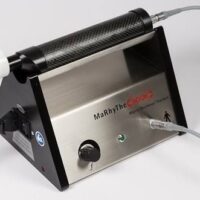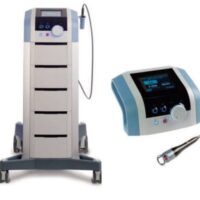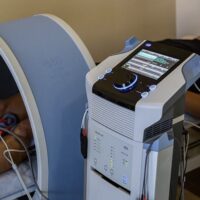Frozen shoulder
- Home
- Frozen shoulder

Frozen shoulder
About 10% of people with rotator cuff disorders develop frozen shoulder. Enforced immobility resulting from a stroke, heart condition, or surgery may also result in a frozen shoulder. Other conditions that raise the risk of a frozen shoulder are thyroid disorders, Parkinson’s disease.
Stages of Frozen Shoulder Syndrome (FSS)
FSS is a slow and progressive condition that follows three stages: Freezing stage, Frozen stage and Thawing stage.
The Freezing Stage: In the initial stage, shoulder pain is felt which occurs without any obvious cause. But the pain gets worse over time, progressively limiting movement of the shoulder and arm. The pain is constant and sharp. The freezing stage lasts from few weeks to several months.
The Frozen Stage: Once the shoulder reaches its maximum restricted movement pattern, it is classified as frozen shoulder. Pain is often felt whenever its moved past the restriction point. Typically a person facing FSS will be unable to reach behind their back and will be unable to bring the hand above the height of the shoulder. The frozen stage typically last for up to nine to ten months.
The Thawing Stage: After the frozen stage, the patient will slowly be able to increase their range of motion. There is a natural course of healing where the frozen shoulder typically thaws within 12 to 18 months, without any treatment! This is a mystery to most doctors and therapists.
After frozen shoulder occurs, there are several things you can do to manage it at home. Here are the best ways to do so:
- Pain management toolsHeat therapy is a great way to decrease pain and potentially improve your shoulder range of motion.Gel packs, hot packs, or even a warm bath are common and available choices of heat therapy.Now, in instances of severe pain, there are over-the-counter pain medications that you can take.
- Move your shoulder joint oftenShoulder ROM exercise that help to achieve an optimal pain free range of shoulder so that , you are able to do your daily routine activities with less pain.If you are into working out, then there are specific shoulder strengthening exercise that can help ease your pain and improve shoulder mobility.If it’s cardio, then the natural arm motions of walking or jogging may help in improving blood flow around your shoulder joint capsule.
- Having a good sleep routineDid you know that you are more sensitive to pain if you don’t sleep well? This is why having a healthy and consistent sleep routine is important. It signals your body to relax, get you ready for bed, and have a better sleep. This is key to recovery.
Exercise and stretching provides muscular coordination for shoulder movement. In some tough cases when these therapies are not effective, removing the capsular adhesions can be considered as last resort. But it is more expensive and carries greater risk. Chiropractic adjustments are very effective tool to resolve painful conditions. Only thing to keep in mind that Frozen Shoulder Syndrome Treatment usually takes a long time to heal hence any improvement represents a significant enhancement to patient. A chiropractor may resort to use Matrix Therapy or Laser Therapy or Tissue Magnetic Stimulation to treat the frozen shoulder.
Matrix Therapy

Laser Therapy

Magneto therapy

